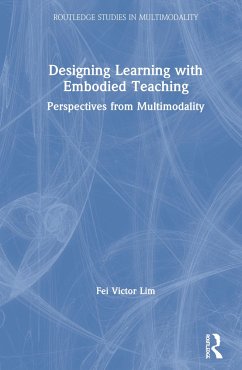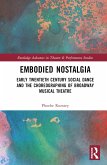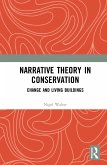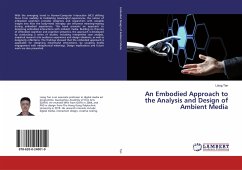Teaching and learning involve more than just language. The teachers' use of gestures, the classroom spaces they occupy and the movements they make, as well as the tools they use, work together with language as a multimodal ensemble of meanings. Embodied teaching is about applying the understandings from multimodal communication to the classroom. It is about helping teachers recognise that the moves they make and the tools they use in the classroom are part of their pedagogy and contribute to the design of the students' learning experience. In response to the changing profile and needs of learners in this digital age, pedagogic shifts are required. A shift is the evolving role of teachers from authority of knowledge to designers of learning. This book discusses how, using examples drawn from case studies, teachers can use corporeal resources and (digital) tools to design learning experiences for their students. It advances the argument that the study of the teachers' use of language, gestures, positioning, and movement in the classroom, from a multimodal perspective, can be productive. This book is intended for educational researchers and teacher practitioners, as well as curriculum specialists and policy makers. The central proposition is that as teachers develop a semiotic awareness of how their use of various meaning-making resources express their unique pedagogy they can use these multimodal resources aptly and fluently to design meaningful learning experiences. This book also presents a case for further research in educational semiotics to understand the embodied ways of meaning-making in the pedagogic context.
Hinweis: Dieser Artikel kann nur an eine deutsche Lieferadresse ausgeliefert werden.
Hinweis: Dieser Artikel kann nur an eine deutsche Lieferadresse ausgeliefert werden.
"A book that brings the profound relevance of what has long been overlooked into clear focus."
Gunther Kress (1940-2019), Professor of Semiotics and Education, University College London, UK
"In this volume, Lim demonstrates the power of a systemic view on multimodality to not only examine embodied teaching, but to show semiotic resources can be best utilized in concert for effective pedagogy."
Thomas Martin Amundrud, Associate Professor, English Education, Nara University of Education, Japan
"Lim has produced a book that any ELT teacher, curriculum specialist, or educational researcher would be well served to include in his or her library as a reference and practical guide or as a key text on embodied teaching."
Sheida Mezban, review in Multimodal Communication
"[This book] would be a useful starting point and source of reference for teachers who are looking to deepen their understanding of multimodal communication and digital communicative technologies within the context of teaching and learning [...] a useful text for groups of teachers collaborating in teams for professional development in this area."
Dr. Jonathon Adams, English Language Institute of Ingapore (ELIS), MOE
"This book greatly contributes to our knowledge about classroom teaching, teacher training, and policymaking. We believe it will also be a fine reference book in many research areas related to teaching, such as educational semiotics, multimodality, and particularly systemic functional multimodal discourse analysis."
Xiaolan Wei and Xueyan Yang, review in Language and Education, DOI: 10.1080/09500782.2021.1889580
"[This book] provides both research insights and practical tips for literacy educators to engage 21st century students in the language lessons."
Dr Willy Renandya, Principal Lecturer, National Institute of Education, Nanyang Technological University
Gunther Kress (1940-2019), Professor of Semiotics and Education, University College London, UK
"In this volume, Lim demonstrates the power of a systemic view on multimodality to not only examine embodied teaching, but to show semiotic resources can be best utilized in concert for effective pedagogy."
Thomas Martin Amundrud, Associate Professor, English Education, Nara University of Education, Japan
"Lim has produced a book that any ELT teacher, curriculum specialist, or educational researcher would be well served to include in his or her library as a reference and practical guide or as a key text on embodied teaching."
Sheida Mezban, review in Multimodal Communication
"[This book] would be a useful starting point and source of reference for teachers who are looking to deepen their understanding of multimodal communication and digital communicative technologies within the context of teaching and learning [...] a useful text for groups of teachers collaborating in teams for professional development in this area."
Dr. Jonathon Adams, English Language Institute of Ingapore (ELIS), MOE
"This book greatly contributes to our knowledge about classroom teaching, teacher training, and policymaking. We believe it will also be a fine reference book in many research areas related to teaching, such as educational semiotics, multimodality, and particularly systemic functional multimodal discourse analysis."
Xiaolan Wei and Xueyan Yang, review in Language and Education, DOI: 10.1080/09500782.2021.1889580
"[This book] provides both research insights and practical tips for literacy educators to engage 21st century students in the language lessons."
Dr Willy Renandya, Principal Lecturer, National Institute of Education, Nanyang Technological University








